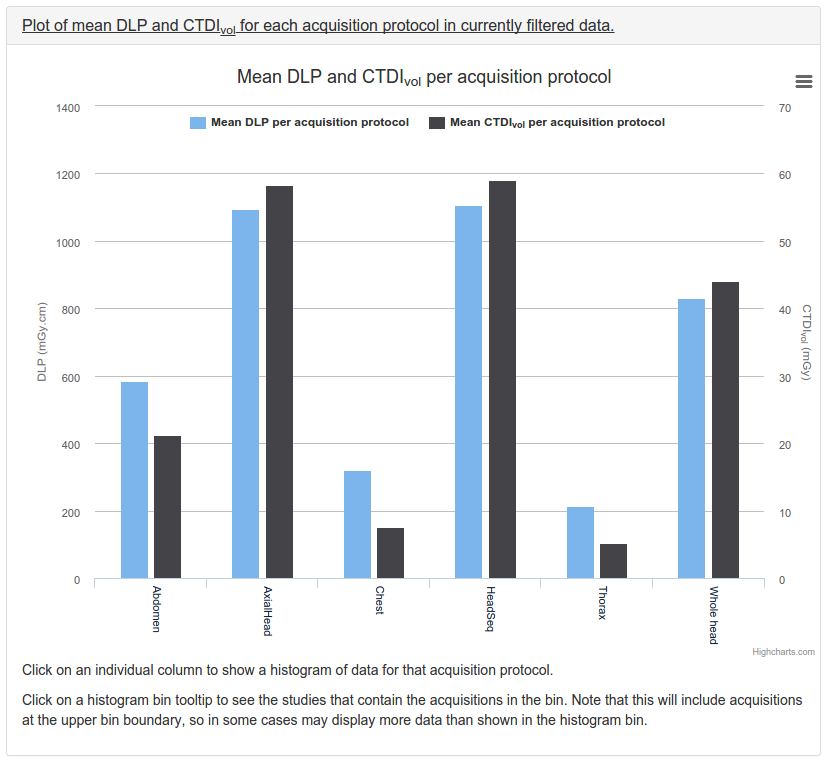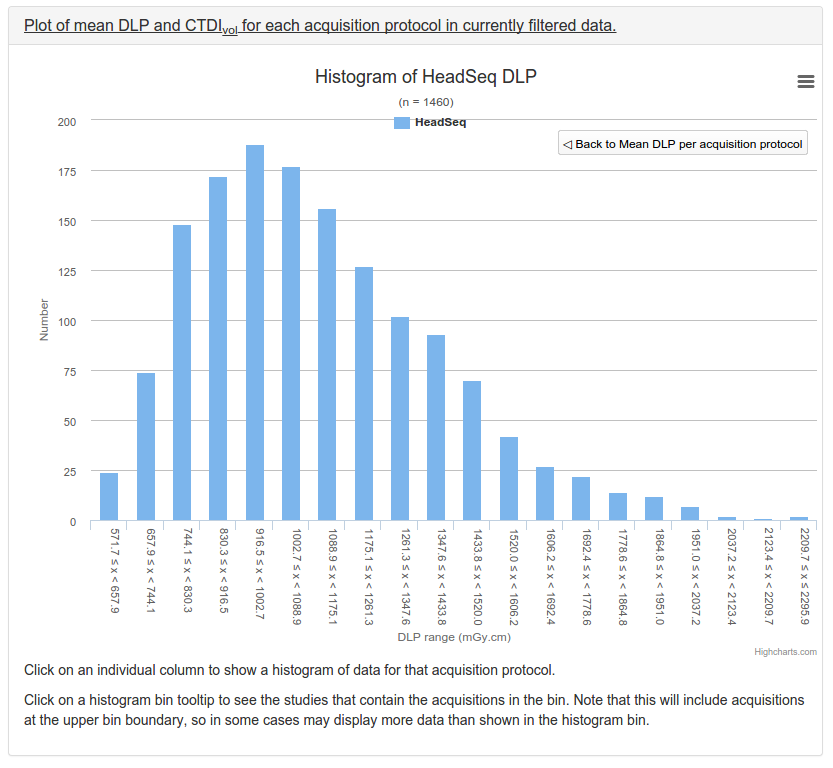 OpenREM
OpenREM
Free and Open Source Radiation Exposure Monitoring for the physicist
What is OpenREM?
OpenREM is a free, open source application for patient dose monitoring. It features:
- Importing of CT, planar X-ray, fluoroscopy, and mammography data
- Displaying summary exposure data, with filtering and searching
- Charts to visualise and explore the data, including mean and median dose metrics, histograms, workload data and more
- Skin dose maps for fluoroscopy using a simple geometric phantom
- Export of data into spreadsheets, sorted and summarised
OpenREM therefore provides the tools a qualified medical physicist needs both to gather data for reference/representative dose reporting and — more importantly — for monitoring and optimising radiation exposures as part of an interdisciplinary dose and image quality radiology team.
By default, patient identifable data or protected health information are not retained. Specifically, name, date of birth, patient ID etc are not stored; however, patient age (decimal) and patient sex are as these are useful for population dose analysis. Alternatively patient name and ID can be retained, used in searches and exported based on permissions. These details can also be stored in a hashed format.
Display of data
OpenREM provides a web interface for display of the studies that have been imported into the database, allowing easy review of the latest data. It also has a filtering function to enable any subset of the studies to be reviewed.
Each of the modalities has charts suitable for that modality optionally plotted within the web interface. Some examples for CT are shown below:


Latest...
Changes: OpenREM version history
Latest @_OpenREM tweets
Show me a demo!
You can find a demo version of OpenREM at demo.openrem.org/openrem. It has been populated with computer-generated data. Note that exports are not currently available from the demo site.
Username and password are demo demo
What do you need to get started?
OpenREM uses Python and will run on any platform that runs Python. This will typically be a Linux, Windows or Mac PC or server.
- A computer
- Python 2.7
- A database
- (A web server)
You will need to install Python (v2.7) along with setuptools and pip (links to instructions for this are in the documentation). You will also need to install a database and a web server. The software comes with a database that can be used for testing, but it is not intended for a live environment and PostgreSQL is recommended. There is also an inbuilt web server that is suitable for testing, but it is recommended that this is replaced by Nginx/Gunicorn on Linux and Microsoft IIS on Windows for production use.
You will need some source data - preferably Radiation Dose Structured Reports but also images depending on the source modality, and these will either be sent to the OpenREM server or will make use of the OpenREM query-retrieve function. A built in DICOM Store node is provided, but not recommended at this stage for production use. Instead, instructions are provided for using Orthanc.
What services is OpenREM developed with?
- Development environment: JetBrains PyCharm (with a complimentary licence for open source projects)
- Code repository and issues tracking: Atlassian Bitbucket (free) with a complimentary licence for open source projects for extra pipelines time (CI/CD)
- Automated code review: Codacy (with a complimentary licence for open source projects)
- Code testing coverage: Coveralls (with a complimentary licence for open source projects)
- Documentation hosting: Read the Docs (free, funded by ethical advertising)
- Python package hosting: PyPI - the Python Package Index (free)